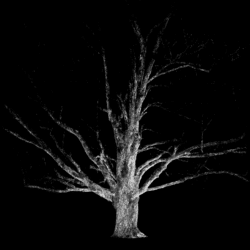This column will be a regular feature of The Philanthropist and, as the title suggests, its principal purpose is to outline briefly developments that have occurred in the tax field since the previous edition of this publication. It is not intended as an exhaustive treatise on the particular matter under discussion nor can the authors assure you that all important items have been covered. As it is intended to highlight any developments in this area whether they relate to income tax, death taxes and commodity taxes, it will not replace a substantive article on the subject which may appear either at the time of the publication of this column orin a subsequent edition of The Philanthropist.
It is hoped that this column as a regular feature will alert the officers and directors responsible for the administration and/or management of a registered charity and its professional advisors to developments that have occured recently regardless of whether they take the form of a change or proposed change to the relevant Act, administrative practice, case law and the like.
The major change in the income tax field since the last edition of this publication is the requirement for all corporations including exempt taxpayers such as registered charities and non-profit corporations to account for interest income for income tax purposes on an accrued basis. This provision would affect principally corporate charitable foundations although it has general application to all corporate registered charities regardless of their classification. In the case of charitable foundations, the effect of this provision has been aleviated somewhat by a change in the calculation of the income reserve allowed to such entities.
The Budget of October 28, 1980 proposed that all corporations, partnerships and certain trusts must include in income for tax purposes interest on an accrual basis whereas previously some registered charities were accounting for such income on essentially a cash basis irrespective of the accounting treatment. Certain financial institutions were already accounting for interest income on an accrual basis. In general, the effect of this provision is to require all corporations to include in income for tax purposes interest on an accrual basis. Originally, no alleviating provision was proposed for a charitable foundation that was required to expend on charitable activities carried on by it and by way of gifts made by it to other prescribed charitable institutions, a certain percentage of its income (generally 90%) notwithstanding that such a charitable foundation would now be required to account for its interest income on an accrual basis. The draft legislation implementing the proposed Notice of Ways and Means Motion provided a transitional rule whereby such an entity could account for interest income on the former basis where the interest relates to an obligation acquired by it before October 29, 1980 unless the obligation was issued by a person with whom the corporation was not dealing at arm’s length. This new rule relating to accrued interest would have presented some difficulties to charitable foundations and in particular those which could not avail themselves of the transitional rule, insofar as meeting the income distribution test which is a prerequisite to maintain registration. As a result of representations by interested parties, the impact of this provision on the required income distribution in a particular year has been relieved somewhat by a change in the calculation of the maximum income reserve which can be claimed. Under these new rules, a charitable foundation can now claim as an income reserve an amount equal to the income of the current year and not, as previously provided for, an amount equal to the income of the preceding year; in both cases, the term “income” means income for tax purposes before any adjustments on account of the income reserve. This provision which was enacted on February 26, 1981 applies to a corporation with a taxation year commencing after October 28, 1980. Accordingly, for a registered charity that has a calendar year as its fiscal period, the accrued interest rules are applicable for the 1981 and subsequent taxation years.
Although this provision would affect mainly the distribution requirements of a charitable foundation, it would be applicable in the calculation of the income of a registered charity irrespective of whether it is a charitable organization or charitable foundation. Therefore, if a charitable organization must determine its income for tax purposes for whatever reason, it would be required to include in its income interest on an accrual basis irrespective of the fact that it may account for it on a cash basis. One area in which this calculation may be necessary is the filing of the federal corporate tax return that technically all corporate taxpayers are required to file, although a number of registered charities do not appear to be filing such a return. It would also apply to any provisions in Section 149.1 where a reference is made to the word “income”.
As mentioned above, the main effect of this change will be borne by a charitable foundation. In an extreme position, where a private foundation with a December 31 year-end has always claimed the maximum income reserve, has all its investments in obligations issued by non-arm’s length party or parties and has accounted for its interest income on a cash basis, it would be faced with the requirement to expend on charitable activities carried on by it and by way of charitable donations made to qualified donees in the 1981 and 1982 fiscal years an amount equal to 90% of the accrued interest at the end of the 1980 taxation year; this amount would be in addition to the required distribution of 90% of the income of the current year although this would probably be reduced from the required distribution under the former rules because it can calculate the maximum income reserve based on the income of the current year and not that of the preceding year. Where a charitable foundation can avail itself of the transitional rule relating to arm’s length debt acquired prior to October 29, 1980, the effect could be spread over a number of years depending upon when the debts became due. For a charitable foundation thathas not been claiming the maximum income reserve over the years, the effect of this rule could be phased in over a period of years by an adjustment to the income reserve.
In addition to the results mentioned above, it could have other effects, some of which may not be known at this time and which may be only peculiar to the operations of one or more registered charities. Suffice it to say, it is an area that should be looked at closely insofar as its effect, if any, on a particular registered charity. It is not known at this time what effect, if any, that the change would have on the preparation of the public information return, form T3010.
Further, interest on an annuity contract acquired after December 19, 1980iscaught by these rules; the interest that will be deemed to accrue to a corporation will be determined by Income Tax Regulations which have not been issued.
It should be noted that the accrued interest rule would apply to all corporate charities but it would not apply to a registered charity that is a trust. Accordingly, it would appear that a charitable trust that qualifies as a registered charity could continue to account for its interest income on essentially a cash basis.
The change in the calculation of the income reserve will allow a registered charity additional time in which to distribute the required funds. Under these rules, the maximum income reserve that a charitable foundation can claim is based upon “the income for tax purposes” of the current year rather than the income of the preceding year without considering any adjustment arising because of the income reserve.
The change in the income reserve is also applicable to non profit corporations for scientific research.
Certain registered charities may also be affected by two other changes in the Income Tax Act that were enacted at the same time as the accrued interest provision. In general these provisions apply to all exempt taxpayers including registered charities. As these provisions only apply to a limited number of registered charities, we will only mention generally the provision and the applicable section number and suggest that any registered charities that may be affected by these provisions review them in some detail.
Part XII (section 208) has been inserted in the Income Tax Act and provides that any person (other than a prescribed person) who is exempt from income tax will be required to pay a special tax of 33 V,% in respect of certain royalties, taxes, lease payments etc. paid to any person including a government, in respect of Canadian resource property.
Subsection 206( 1.1) of the Income Tax Act now provides that certain persons exempt from income tax, including registered charities, will be required to pay a tax in respect of an agreement entered into by the entity to acquire shares of the capital stock of the corporation at a price that may differ from the fair market value at the time that they may be acquired. The tax is equal to I% per month (or part thereof) of the maximum amount that the taxpayer may be required to pay fort he shares under such an agreement. This provision specifically provides that it does not apply to an option to buy shares where the option is listed on a prescribed stock exchange.
The last change to the Income Tax Act enacted on February 26, 1981 applies to both donees and donors. The types of charitable organizations that are now required to issue official receipts with prescribed information have been expanded from registered charities and registered Canadian amateur athletic associations to include all charitable institutions to which gifts are tax-deductible, such as federal and provincial governments, Canadian municipalities, and prescribed universities outside of Canada. The information contained in such an official receipt is similar to that which is required for donation receipts issued by registered charities and registered Canadian amateur athletic associations. The Income Tax Regulations supplementing the new provisions of the Income Tax Act are contained in Part XXXV which was amended on March 26, 1981. Furthermore it should be noted that the Income Tax Regulations have prescribed certain information where the donation takes the form of property other than cash. The information that will now be required is as follows:
(a) the day on which the donation was received,
(b) a brief description of the property and
(c) the name and address of the appraiser of the property, if an appraisal was undertaken.
In an unrelated matter, the Department of National Revenue has continued its pursuit of questionable charitable organizations (at least in their eyes) by threatening to revoke the registration of Renaissance International because of its alleged political activities. In the previous edition of The Philanthropist
, the subject of political activities carried on by a registered charity was discussed at some length in the light of the fact that the Department ofNational Revenue had refused to register the Manitoba Foundation for Canadian Studies as a charity.
A recent development which may have a profound effect on philanthropic giving in Canada is the case of Antoine Guertin Ltee. vs. Her Majesty the Queen* (“Guertin”) which was heard in the Federal Court- Trial Division. In this case, the Department of National Revenue reassessed the taxpayer disallowing “donations” to a registered charity on the basis that these amounts reduced the income of the taxpayer artificially; however, the taxpayer was successful in its position. The facts of the situation contained in the summary of the case suggest that this case is possibly unique and not indicative of future assessing practice by the Department of National Revenue in this area. The authors hope that this is so as it would be unfortunate if the Department of National Revenue examined thoroughly every situation where a taxpayer contributes to a private foundation or charitable organization. If the Department of National Revenue undertook such a scrutiny in these cases, they would strike a blow to the charitable giving movement in Canada.
Briefly the facts of the case are as follows. The taxpayer, Antoine Guertin Ltee. contributed $12,400 to a registered charity, La Foundation St. Pierre (“The Foundation”). In addition, the taxpayer paid bonuses to its employees in the amount of $Ill ,654 in respect of which the employees made charitable contributions of $39,155 to The Foundation. The funds received as a result of these donations, $51,555, was immediately loaned by The Foundation to the taxpayer in *81 DTC 5045 return for a promissory note bearing a 7% rate of interest. This practice continued for many years and the interest received on the notes was distributed to the missions funded by The Foundation. In 1977 the capital of The Foundation was $485,000.
The Crown contended that the charitable donation of$12,400 and the portion of bonuses representing charitable donations by the employees ($39,155) should be disallowed as the utilization of The Foundation was only an arrangement devised by the taxpayer to artificially reduce its income for the year in question (1972). It is reported that the taxpayer issued cheques in the amount of the charitable donations to the employees as part of their bonuses; the employees, in turn, endorsed these cheques to the Foundation. The Court rejected this argument after reviewing the facts of the situation and indicated that the capital of The Foundation of$485,000 was in fact property of The Foundation as the promissory notes signed by the taxpayer would ultimately have to be repaid. The Court addressed itself only to the particular matter at hand and did not consider whether a promissory note with a 7% rate of interest conferred any benefit on the taxpayer.
M.L. DICKSON, The Ontario Bar, Toronto, and L.C. MURRAY, Thorne Riddell, Chartered Accountants, Toronto.


